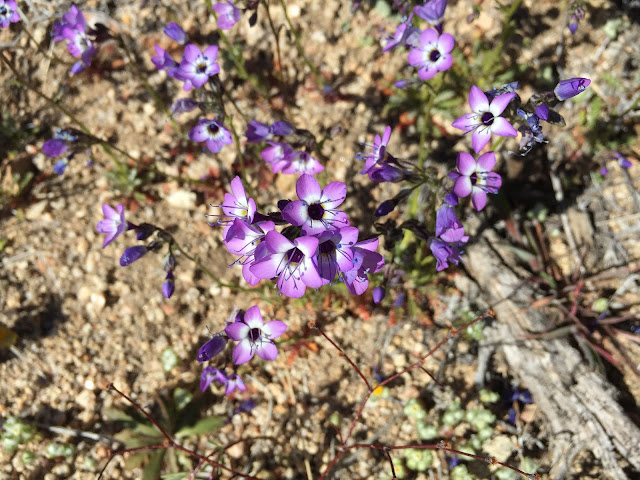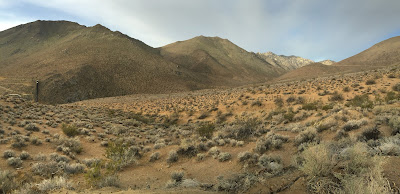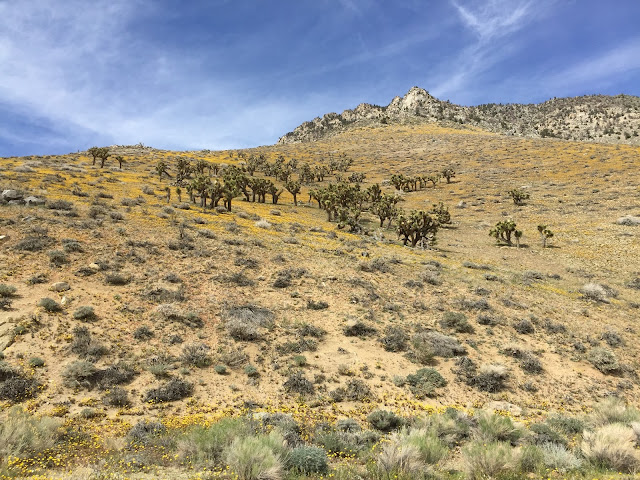Bird List
We are tapering down mileage for the start of our big adventure, so no huge hikes this week. We still need to get a bit of exercise, so we decided to walk the Cow Heaven Canyon Road and fill an eBird gap, with the hope of seeing our first Scott's Orioles of the year.
We didn't expect much in the way of flowers and as we walked up the road we could see the coreopsis on the hillside was done for the year. When we got to the end of the road and looked in the wash, we were in for a surprise - flowers! And they were at their peak.
So, we wandered around the far hillside and in the wash noting lovely gilias, popcorn flower, tidy tips, coreopsis, and scale bud. Very nice.
And yes, along with 27 total species we saw a pair of gorgeous Scott's Orioles!
 |
| Tidy tips |
 |
| Gilia |
 |
| Tidy tips and Joshua trees |
 |
| Coreopsis |
 |
| Wallflower |
 |
| Scale bud |
 |
| Lupine |

























































































